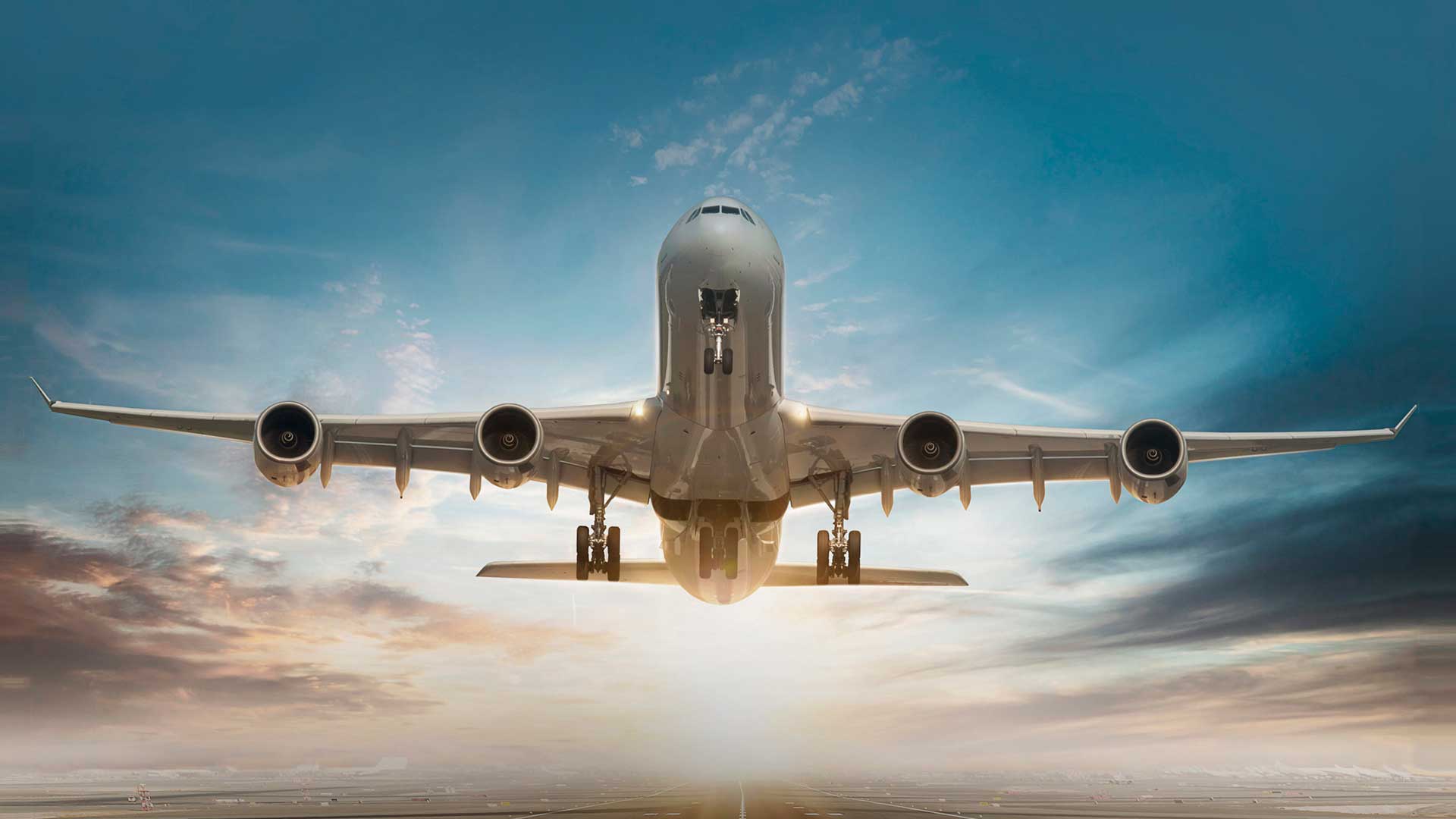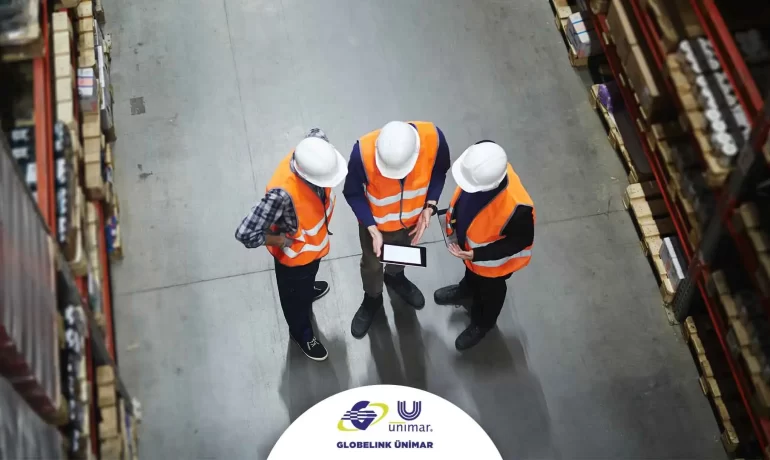
- June 16, 2021
- Blog
With the stalling of the recovery in passenger markets, there is no end in sight for the capacity crunch being felt in the air cargo markets. Early 2021, however, did offer rays of hope.
Although we have left behind the first anniversary of the isolation and restrictions caused by COVID-19 around the world, we are still reading and listening to the news of strict measurements for travel, business and social life due to the emergence of new fluctuations and variants in many parts of the world. This isolation, which is experienced at an unprecedented level, has had an impact on many industries around the world.
Along with the travel restrictions imposed on a global scale, air transport has also had its share of this. The pandemic that led to the suspension of passenger flights resulted in an acute loss in global hub load capacity. In order to maintain the lifeline of vital supplies and supply chain around the world, cargo operators kept their aircraft in the air longer to compensate for the lack of capacity. Many passenger airlines redesigned their aircraft solely for cargo flights, while some even removed cabin seats to increase cargo capacity.
The International Air Transport Association (IATA) states that 60 percent of all international air cargo capacity was in the bellies of passenger aircraft before the pandemic and that capacity shrank by almost a quarter in 2020.
Airline companies, which carry more than 52 million metric tons of cargo per year and meet 35 percent of global trade, have turned into a kind of economic lifesaver with the outbreak of last year. It has played a vital role in providing much-needed medicines, medical equipment and time-sensitive supplies of the global supply chain. Special flights were made to the regions affected by the pandemic. However, the figures did not provide a good indicator for air transport in 2020. IATA’s data showed that the demand for the global air transport market decreased by 10.6 percent in 2020, compared to 2019. Last year’s data marks the largest drop in year-on-year demand since IATA started to monitor Cargo performance in 1990. Besides, global passenger traffic also fell by 65.9 percent compared to 2019.
Alexandre de Juniac, the former CEO of IATA, describes the last year as a catastrophe, given these figures. Juniac says: “There’s no other way to describe it. What recovery there was over the northern hemisphere summer season stalled in autumn and the situation turned dramatically worse over the year-end holiday season, as more severe travel restrictions were imposed in the face of new outbreaks and new variants of COVID-19.” He says he is sure to have a tough year due to the narrow capacity.
With the stalling of the recovery in passenger markets, there is no end in sight for the capacity crunch being felt in the air cargo markets. Early 2021, however, did offer rays of hope. The data from CLIVE Data Services, one of the leading air cargo analysts, and the TAC Index Report published in February showed that cargo load factors for January reached 66 percent with an annual increase of 9 percent. Global load factors in the last two weeks of January reached a large increase of 10 to 15 percent compared to the same period of January 2020. The monthly air cargo capacity was 18 percent compared to the same month last year.
Managing Director of CLIVE Niall van de Wouw states that this occupancy is not about travel and leisure but consumers’ demand for high-value products. Wouw, on the other hand, warns that these figures are anomalies compared to January in previous years but says: “January’s load factors might be considered odd, compared with previous years, but they are also not surprising when you look at the current dynamics in the industry. One airline recently mentioned to me that they had November volumes in January.”
The COVID-19 environment, which has become the regulator of all industries, makes the market more demanding due to new types of viruses and increasing vaccine distribution needs; on the other hand, due to the high uncertainty caused by the pandemic, airlines are having to fly by sight, not by planning. With the demand created by this uncertainty, many carriers in the global arena stated that they cannot guarantee capacity commitments to their customers in January and February. For example, the capacity of air transport moving east-west across the Atlantic was 76 percent higher in January than in December of the previous year and 88 percent higher than in November. The data obtained from TAC Index show that airfreight rates remain in a state of flux and that airfreight capacities out of Asia have regained value after the first two weeks decrease in the first month of the year.
There is no doubt that the aircraft called “preighters”, which were converted from passenger planes to cargo-only aircraft, have a high share in the increasing rates of air transport. However, the problem in hub transport still continues; this continues to be reflected in the figures in a negative way. Because before COVID-19, smaller planes were preferred by airlines and these logistics provided efficiency to shipping companies.
Boeing noted in its 2018-2037 world air cargo forecast that 2.650 new cargo planes will be in demand and approximately half of them will have a carrying capacity of fewer than 45 tons while Airbus will account for 76 percent of the demand for 39.000 new passengers and freight aircraft for the same period. It states that it will have a carrying capacity between 10 and 40. Airbus also stated that the orders placed in 2019 for the A380 model, which was launched as the world’s largest passenger aircraft that made its first flight in 2007, started to be canceled as of this year and companies except for Emirates have retired this aircraft.
The Demand For Vaccine is Putting Pressure
The rapid rush to distribute COVID-19 vaccines is also putting pressure on capacity and shipping rates. The figures reveal that the rates increased from $ 2.5 to $ 25 per kilo. Although airlines continue to court niche sectors such as perishable foods, pharmaceuticals, electronics and high-value goods, the vaccine has created more intensity in the demand for transportation. After this intensity, logistics companies spend more effort and time to develop expertise in handling pharmaceuticals and vaccines; more importantly, they move in a narrow time frame. For example, Lufthansa, one of the first airlines to specialize in pharmaceutical transport, has been continuously improving its temperature-sensitive freight capacity while Delta Cargo makes use of the “Vaccine Watch Tower” that enables end-to-end visibility for all vaccine shipments. American Airlines Cargo, on the other hand, uses state-of-the-art tracking systems in the “Integrated Operations Center” to keep an eye on all drug shipments, including vaccines, 24/7. Other companies have begun building a vaccine task force and developing critical shipping capabilities, working with healthcare and pharmaceutical professionals to understand the shipping requirements of the new normal.
On the other hand, it is now more essential for companies to create a smooth cold chain for the shipment of both vaccines and other sensitive products.
Service Improvement with Digitalization
As long as the pandemic continues, it will continue to put pressure on all aspects of the air cargo industry. In fact, this pressure is available for all sectors. Therefore, experts of trade and economy say that full normalization can be achieved only if the vaccine is spread around the world and even the pandemic is eliminated.
On the other hand, digitalization comes to the fore so that the industry can progress and reveal a tighter recovery in pandemic conditions.
For years, the air transport industry has been criticized for being fragmented and its slow adaptation to digital transformation. Although the industry has undergone a transformation in recent years, there are still many problems in the air cargo supply chain due to the lack of data sharing among stakeholders and different digitalization speeds. This prevents the industry from gaining greater efficiency, productivity, and supply chain visibility. The new post-COVID-19 period is normally thought to be putting more pressure on air cargo centers by the industry to accelerate digitalization efforts.
Experts say that during the pandemic, logistics companies will try to improve services by focusing on tracking and digitizing products and providing transparency through the shipment process. Moreover, many companies have started to focus more on digitalization in addition to renewing their website. In addition, investments and trends insecure and online payment platforms have also started to expand.
Mark Williams, associate partner of McKinsey points out that e-commerce creates great opportunities for airfreight: “Logistics businesses are increasing their productivity by digitizing customer interactions, increasing productivity with analytical methods to better predict demand, enhancing data systems to standardize electronic air waybills, and increasing door-to-door business. By increasing their business volume, they could capture 15 percent of today’s forwarding market by 2030.”
The researchers emphasize that the actors of the air transport industry must have clear value propositions in order to be successful. This means tailoring solutions for customers and developing the ability to provide end-to-end offers.
Shipment That is More Digitalized Creates Our Agenda for the New Period
Globelink Ünimar Airfreight Manager Banu Mankut: “Air cargo transportation, like all stakeholders of the supply chain, faced various difficulties at the beginning of the pandemic. However, at the point reached, especially with the figures that started to reach the beginning of this year, it also showed us that there is light at the end of the tunnel. We observe that airfreight traffic has returned to pre-pandemic levels in January and February. This has been good news, which is much needed, for the global economy. However, the stagnation experienced in passenger transportation causes the capabilities to be limited. For this reason, new measures and methods need to be put into use.
While the aftershocks of COVID-19 and uncertainty still continue, online methods are the fastest and most permanent way to improve current conditions. The outcome of the sector in the field of digitalization is important to create clarity for the next process. To gain flexibility and to get prepared for future business and consumer needs, it is necessary to constantly rethink the current market situation and act more agile and data-driven to adapt to it.
As a company acting with the goal of being the leader in the logistics of the future, we revised our agenda according to the new requirements and a more responsible, more digital shipping constitutes our basic framework.
As Globelink Ünimar airfreight department, we continue our steady growth even though we encounter certain difficulties like all the stakeholders in the sector at the beginning of the pandemic. In this period, with the completion of the loading and distribution chain at -18 degrees, we added new products to our perishable product network that we offer to the Middle East. Thanks to our Adana office, which we started operations in the first quarter of 2021 and which is the tenth Globelink Ünimar office in Turkey, we respond faster to the demands of the region.
As one of the founding members of the Perishable Logistics Network, which was established to determine the upper limits of perishable cargo transportation worldwide and to provide global supply chain solutions in this field, we carry the products that require special care, such as fruit, vegetables, meat, fish, eggs, frozen food and flowers all over the world, keeping their freshness at the very first day and within the food safety standards.
We continue our activities with an understanding of unconditional customer satisfaction with the solutions we offer, import and export shipments, project transportation, charter planning, perishable cargo, livestock, ECCD, micro export, e-commerce logistics and on-board courier services through our strong agency and service network around the world.”
Artificial Intelligence is Both Changing and Transforming
Today, we can see the clues that we will
The Future of the Cargo Market is Shaped by e-commerce
The e-commerce industry has been growing rapidly since the



